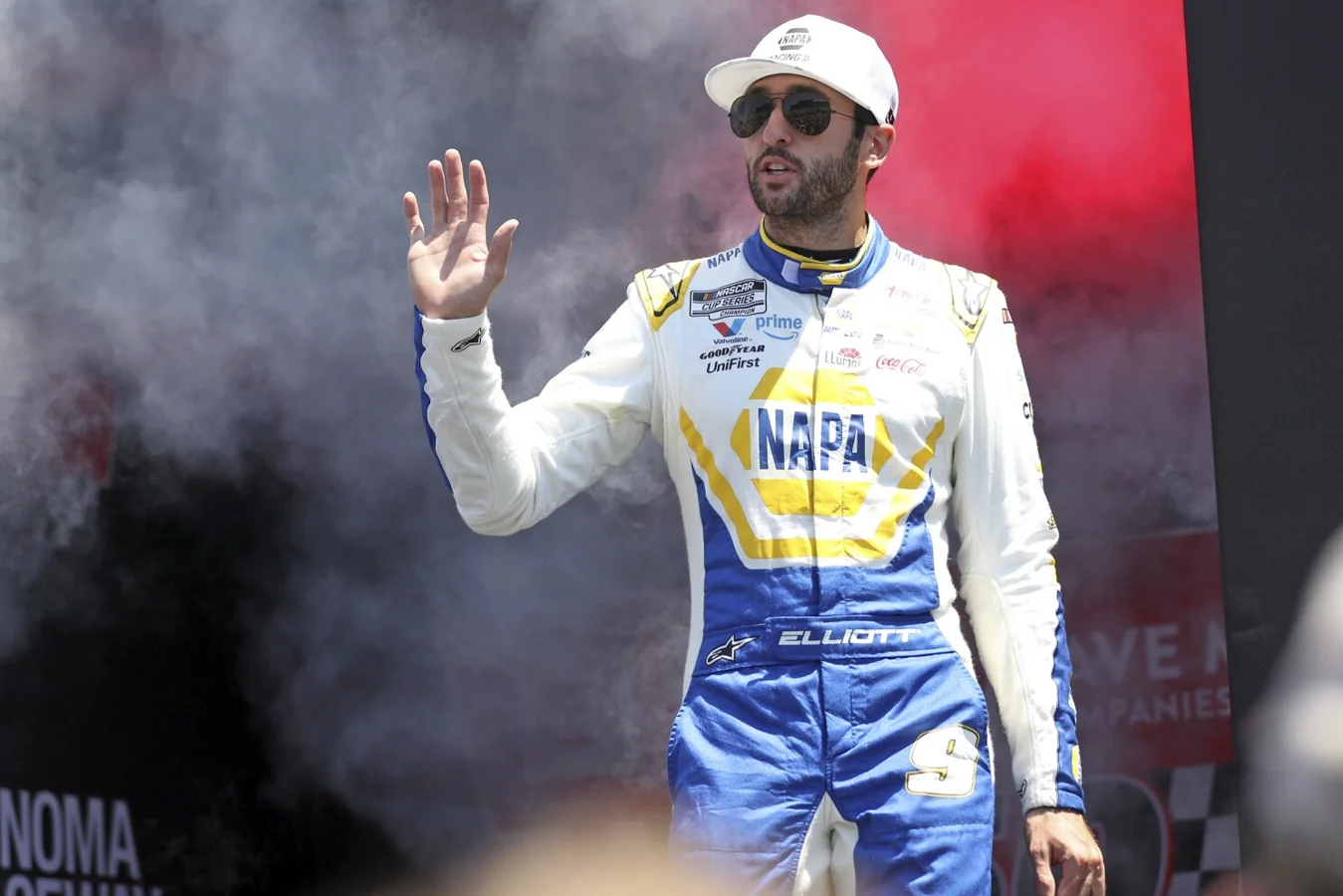Chase Elliott delivered a strong performance at the NASCAR race in Dover on Sunday, starting from pole position and finishing sixth despite a challenging race influenced by a rain delay. The Hendrick Motorsports driver showed consistent speed throughout the event, but a strategic decision by his crew chief Alan Gustafson shaped the outcome in a way that sparked debate. This Chase Elliott Dover race analysis explores his display on the track and the key factors behind the final result.
Impressive Performance Amid Interruptions and Strategy Challenges
Throughout the race, Elliott remained a top contender, consistently running near the front of the pack despite the interruptions caused by a rain break. NASCAR analyst Jordan Bianchi praised Elliott’s performance on the Teardown podcast, highlighting that although the official result was a sixth-place finish, the effort on the track told a different story. Bianchi emphasized that Elliott’s team showed their best form this season by leading several laps and capturing a stage win for the first time this year.
“I think this was a phenomenal race for Chase Elliott. The result is going to say sixth, but this was to me and I understand they won at Atlanta. This was a great performance and I think their best performance of the year. They were consistently fast throughout the entire race. They won a stage today, by the way, which is the first time they’ve done that all year,”
Bianchi noted.
He further added,
“They did the things today that we have talked about them not doing, leading a bunch of laps, winning a stage, putting themselves in position. This wasn’t a team that was just grinding out another top 10. This was a team that was in the mix and was a team to beat today.”
So far in the season, Elliott has never finished outside the top 20, backing his claim as one of the most consistent drivers. In addition to his win at Atlanta, he has logged six top-five finishes, underlining his steady excellence. Bianchi remarked that Elliott’s #9 team appears to be regaining momentum and refining their competitive edge.

Controversy Surrounding Crew Chief Alan Gustafson’s Tire Strategy
While Elliott’s performance was laudable, the strategy deployed by crew chief Alan Gustafson drew criticism from Jordan Bianchi, who shared his views about the tire call that arguably cost Elliott a better finish. Bianchi described Gustafson as a frequent target for criticism from Elliott’s fans whenever results fall short of expectations.
Bianchi expressed clear disapproval of the decision on the podcast co-host slot, factoring in the race conditions and tire behavior observed throughout the event. Despite some tire degradation, he felt this was not a decisive element in the race and that other drivers managed well on older tires.
“I didn’t like the call. It didn’t seem like tire wear today was a huge factor. Yeah, the tires gave away after a certain time and you saw a little bit of corroding everywhere, but we saw drivers in older tires be able to do things and I didn’t like that call then. I like the idea of staying out being aggressive and holding your line,”
Bianchi explained.
Bianchi pointed out the importance of maintaining clean air while racing at Dover, more so than at many other tracks, which strengthened his argument that Elliott would have benefited from an aggressive approach and staying out on track rather than making the tire change call. The #9 car showed clear speed and competitiveness, which added to the feeling that the pit strategy held Elliott back.
The Race’s Significance and Elliott’s Future Prospects
The Dover race outcome underscores Elliott’s rising trajectory this season, as he consistently contends near the front and improves his racecraft. Despite the sixth-place finish and the debated strategy call, his pace and skill bolster Hendrick Motorsports’ hopes for continued success. Elliott’s ability to stay within the top positions, coupled with his stage win at Dover, indicates momentum building towards championship contention.
This analysis points to growth and refinement in the team’s approach, although strategic decisions remain critical variables that may influence future race results. The spotlight now turns to how Gustafson and Elliott will adjust their tactics moving forward, especially in handling tire wear and timing pit stops to maintain competitiveness.
As the season continues, Elliott’s consistently strong average finishes place him among the elite drivers, driving anticipation for his next opportunities to convert performance into podium results and victories.
